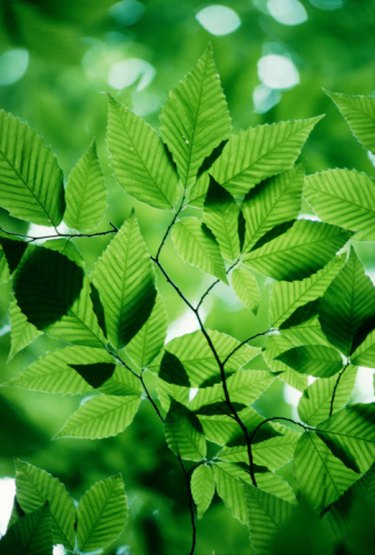
Measuring the effects of light color on photosynthesis is a fun and simple experiment for middle or high school students. By growing the plants beneath color filters, you can determine which color of light produces optimal growth.
Types
Video of the Day
Visible light is a form of electromagnetic radiation with wavelengths ranging from 400 to 750 nanometers, where a nanometer is one-billionth of a meter. With a wavelength of about 400 nanometers, violet light is at one end of this region while red light is at the other. Colors like green, yellow and orange lie in between. To select for certain colors of light, you can buy color filters from science or educational supply stores -- or make your own by using colored plastic.
Video of the Day
Function
The first step in photosynthesis is the absorption of light by pigments like chlorophyll a and chlorophyll b. Each pigment absorbs certain colors of light more efficiently than others do. Chlorophyll a and b preferentially absorb blue, violet and red light; carotenoids help to extend the range of colors absorbed by the leaf, but ultimately green light is poorly absorbed. Chlorophyll molecules reflect green light, which is why plant leaves appear green.
Effects
Plants grown under blue, violet or red light should outperform plants grown only under green light. Plants under green light will not be able to use most of the light energy that strikes their leaves, so they will grow poorly or even die.